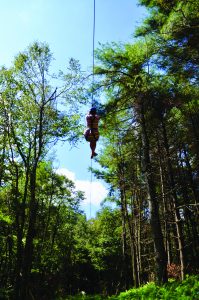
By Vickie Holt
About twelve years ago or so, Robert Nickell was sitting down with some time to kill. On the coffee table next to him was a book written by Dr. Donald Perry. Dr. Perry is a Biologist famed for studying the rain forest canopy of Costa Rica. The book was called “Life Above the Jungle Floor”, and it not only catalogued several new species, but it also inspired the 1992 film, “Medicine Man”, starring Sean Connery.
Perry’s work appeared on the covers of Scientific American, Smithsonian, and New York Sunday Times magazines, and was featured in Newsweek, Life, Geo, Paris Match, and Quick of Germany, as well as many other publications and documentaries worldwide.
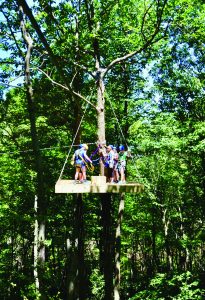 What made Perry’s work so unique was that, in 1991, he was the first biologist to go up into the canopy ecosystem. No one had ever done it before, and because of it, several new species were discovered. Among them was a monkey no one had ever seen because it lives its whole life high in the trees. There were also two new snake species no one had ever seen.
What made Perry’s work so unique was that, in 1991, he was the first biologist to go up into the canopy ecosystem. No one had ever done it before, and because of it, several new species were discovered. Among them was a monkey no one had ever seen because it lives its whole life high in the trees. There were also two new snake species no one had ever seen.
“It was really interesting,” says Nickell. But the part that interested him most was the intricate system of ropes, platforms, and hammocks Perry had created so he could spend prolonged amounts of time in the treetops. Perry had built the world’s first prototype zipline and was the first researcher to ever use one to study the rainforest canopy.
After the research was over, however, he didn’t know what to do with it. The entire infrastructure was still there, with ropes stretched tree to tree. Finally, Perry had decided to create a canopy tour where visitors could pay $45.00 to be manually hoisted into the treetops. They would then then pull themselves along, hand over hand, from platform to platform.
After learning about the tours, Robert Nickell went to Costa Rica, had a go, and thoroughly enjoyed it. He was also privileged to meet Dr. Perry, personally! Robert tells us he was a nice guy.
Being engineer-minded and in the construction business at the time, Robert began thinking that if the ropes were pulled really tight between the trees, and if better pulleys were used, someone could just zip along the lines instead of having to pull hand-over-hand.
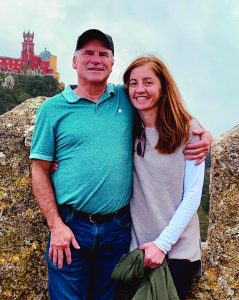 Robert decided to present his ideas to a couple of property owners in Costa Rica. He didn’t have to try very hard to convince them. “They thought it was such a great idea that they just went for it. They just did it!” And that’s how Robert Nickell designed the world’s first proper, recreational zipline.
Robert decided to present his ideas to a couple of property owners in Costa Rica. He didn’t have to try very hard to convince them. “They thought it was such a great idea that they just went for it. They just did it!” And that’s how Robert Nickell designed the world’s first proper, recreational zipline.
After that first zipline had been built, another thought came to Robert’s mind. “I need to be doing this!” And that was all it took. It wasn’t very long until Robert’s ziplines were being commissioned and built all around the world.
He designed and/or built in China, Ecuador, Costa Rica, Peru, Scotland, Wales, Mexico, and more. He also built the first and biggest (to this date) zipline in Canada. Located on the east coast, North Atlantic Ziplines is huge, with its longest line stretching over two-thousand feet from mountaintop to mountaintop.
Among many other places, he also built a zipline facility for Sir Richard Branson on his privately-owned Necker Island in the British Virgin Islands. Three years after it was built, Necker Island got hit by a devastating hurricane. Days later, the billionaire called Robert personally to tell him the only thing left standing on the island was his zipline.
Eventually, Robert wanted to build in the United States. This time, however, he wouldn’t be building for an investor. This time, Robert aimed to own and operate the facility, himself. It would be located in North Carolina, and it would be the first the country had ever seen.
Almost immediately, there were problems. Insurance was impossible to get. Nobody in America had ever heard of ziplines, and from the sound of it, no one wanted anything to do with them.
Building inspectors had no way to inspect them because there was no one qualified. It was suggested that if he could get an engineer to sign off on the project, things could move forward. Even then, it was difficult finding an engineer willing to look at it. No one in America was familiar enough with what a zipline should be to judge the quality of the design or the completed structure.
Finally, however, Robert found an engineer who gave his design the stamp of approval. He was then approved by the county and began to build. After that, he obtained a conditional use permit, but soon hit another roadblock.
The state said that because there was no precedent for this type of facility, and because there were no inspection standards and no regulations, he would have to obtain a million dollars in insurance! Robert called every insurance company there was. Nobody would touch it. He’d been building ziplines all over the world for almost twelve years and there had never been a single incident or accident. Robert was baffled by the resistance. After all, insurance is written every day for amusement parks, water-sport parks, public auto-racing facilities, ski resorts, and all other manner of adventure sport businesses.
He just couldn’t understand the reluctance. So, he opened for a year with no insurance. There are no state regulations for facilities that operate for free, so for the first year, his zipline was a non-commercial experiment. The facility operated on donations; advertising to churches. Their first customers were dozens of field trips and church groups.
After a year of no accidents or incidents, Robert returned to the insurance companies to challenge the denials based on no history or precedent. “Please insure me,” he asked. Finally, in 2006, he was able to get insurance and America’s first zipline officially opened for business. Then it took off and exploded!
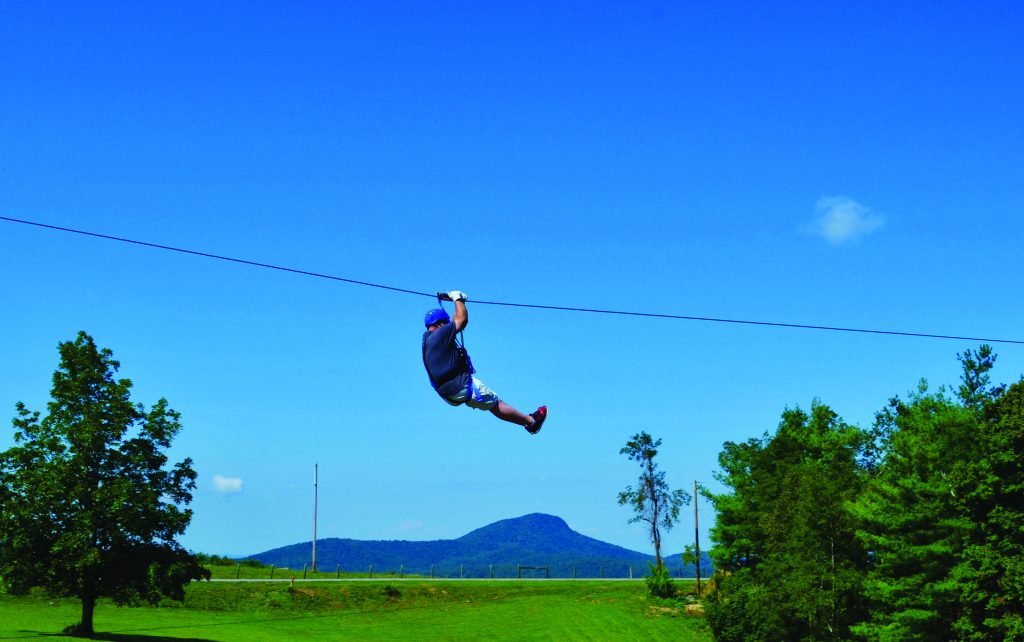 The local Fox news station came out and filmed a segment that aired during the evening news. The piece was so popular that calls poured into the station! There were also hundreds of hits on their website, with comments asking for more information. As a result, Fox re-ran the story three times a day for a whole week. Signature Magazine in North Carolina also did a story, and it was the most-hit story on the magazine’s website in five years! Hundreds of people came for ziplining after having seen that article.
The local Fox news station came out and filmed a segment that aired during the evening news. The piece was so popular that calls poured into the station! There were also hundreds of hits on their website, with comments asking for more information. As a result, Fox re-ran the story three times a day for a whole week. Signature Magazine in North Carolina also did a story, and it was the most-hit story on the magazine’s website in five years! Hundreds of people came for ziplining after having seen that article.
These two pieces of media coverage made Robert’s zipline so popular that he went from getting about sixty hits a week on his website to getting about 350,000 hits a month! Apart from speaking to churches during that first year, Robert never advertised that zipline park. He never needed to.
Upon reflection, Robert says he didn’t build in the United States until 2006 because he’d always thought the perception was that ziplines were for jungles and rainforests. He really didn’t think anybody in America would be interested. But as they, “if you build it, they will come,” and boy, was that famous movie quote on the money!
Not only was Robert responsible for the first zipline in America, as well as the first in North Carolina, he was also behind the first ziplines in Tennessee, West Virginia, Missouri, Arkansas, California, and more! Most were built for other investors, but he also built two more for himself; one in Missouri and one in Arkansas. He has since sold the ones in North Carolina and Missouri, but he still owns the one in Arkansas and it’s still doing great!
 Robert and his family had moved to Branson, Missouri to build Zipline USA after having sold the first one in North Carolina. At the time, Zipline USA was the biggest in the world. It covered 120 acres of land and had twelve cables; one of which was three quarters of a mile long and 350 feet high – stretching from mountain top to mountain top. It’s still one of the biggest in the world, and still probably the biggest in United States for land area and length of the cables. “With close to five miles of cable,” says Robert, “it’s a heck of big zip line”.
Robert and his family had moved to Branson, Missouri to build Zipline USA after having sold the first one in North Carolina. At the time, Zipline USA was the biggest in the world. It covered 120 acres of land and had twelve cables; one of which was three quarters of a mile long and 350 feet high – stretching from mountain top to mountain top. It’s still one of the biggest in the world, and still probably the biggest in United States for land area and length of the cables. “With close to five miles of cable,” says Robert, “it’s a heck of big zip line”.
Robert then set his sites on Virginia. Having spent his childhood just across the North Carolina border in Stewart, Robert was often brought to Floyd with his family, many times visiting Mabry Mill. Robert fondly remembers dancing at the Country Store when he was young; before it was the thing to do. He’d come to the jam sessions where folks would just sit around play music. In later years, he’d drive all the way from Winston-Salem to dance and clog in Floyd because there was nowhere to do it back home.
“I’ve always loved this area since I was seven years old,” says Robert. “Even then, in the back of my mind at age seven or eight, I was thinking man I’d love to live up here. It’s beautiful. And you know just how life comes full circle…it just comes back around.”
Robert says that he and his wife, Joanna, looked all over Virginia to find a location that would support a large zip line, but they just couldn’t find the right land in the right place. They looked at Nelson County, Amherst County, Augusta County, and Montgomery County. They even checked Damascus and Abingdon, but multiple issues, including zoning, kept them returning them to Floyd. “We found a good piece of land out near Copper Hill,” says Robert, “but it was at the end of six miles of narrow dirt road. The traffic would have made it a nightmare for customers.”
More and more, the multiple return trips began to convince Robert that his favorite childhood destination was the perfect place for his Virginia-based zipline park. “We spent a lot of money going back and forth, looking for land. And we spent over $1000 at Floyd Motel!” he jokes. “But that’s a good place, we like it a lot.”
They finally settled on the location at 3253 Black Ridge Road SW because it was situated only a mile off the Blue Ridge Parkway. “It just seemed like the right place to do it.” They broke ground earlier this year at the beginning April, and by the end of June, everything was built, complete, and ready to open. Everyone was amazed!
On June 29, 2019, Buffalo Mountain Ziplines – the biggest zipline park in Virginia – opened to the public. Along with Joanna, Robert runs the facility with his nephew, Laith, his son, Joseph, and daughter, Makayla. In addition to finding a home for his zipline park, Robert also found a new home for his family; a little house on Slate Mountain, about two miles from Mabry Mill…and Robert couldn’t be more tickled about it!
 A month later during FloydFest 2019, close to eighteen hundred people tried Robert’s temporary set-up that included two, 60-foot high lines that stretched 385 feet, each way. “It’s hard to say no to free ziplines”. With such excellent promotion, Buffalo Mountain got a solid start, and now averages two tours a day during the week and more on weekends.
A month later during FloydFest 2019, close to eighteen hundred people tried Robert’s temporary set-up that included two, 60-foot high lines that stretched 385 feet, each way. “It’s hard to say no to free ziplines”. With such excellent promotion, Buffalo Mountain got a solid start, and now averages two tours a day during the week and more on weekends.
Robert says that the zipline is already contributing to the community and its economy! Not only does he hire local employees, but people who have come to the area for the first time after seeing the zipline on Facebook have been completely blown away by the beauty of this region. And the folks at Buffalo Mountain Ziplines – especially Robert – are always happy to tell new visitors about the Country Store, Mabry Mill, the hiking trails, the music, the shopping, the art, and everything else there is to do and see Floyd.
At Buffalo Mountain Ziplines, guests can soar through the treetops on cables that reach as high as 150 feet above the forest floor while traversing distances up to 2400 feet! Suitable for adventurers ages three and up, experiences include the Blue Ridge Adventure Tour which features eight ziplines for almost two hours of high-flying fun! 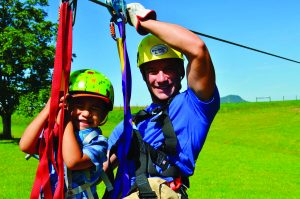 There is also the Rocky Knob Treetop Tour which can accommodate those with tighter schedules. In just forty-five minutes to an hour, this tour features the park’s first five cables, and is perfect for Boy Scouts, Girl Scouts, and birthday parties!
There is also the Rocky Knob Treetop Tour which can accommodate those with tighter schedules. In just forty-five minutes to an hour, this tour features the park’s first five cables, and is perfect for Boy Scouts, Girl Scouts, and birthday parties!
For ages eight and up, Buffalo Mountain also offers the Full Moon Tour! Even seasoned zipliners may find this nocturnal ride a new experience. This tour features eight cables, as well as a host of Floyd’s night-time wildlife. Afterward, guests can also enjoy making s’mores and roasting marshmallows around a campfire.
A minimum of two guests is required for booking. For more information, details about the tours, booking, pricing, and group discounts, visit www.buffalomountainziplines.com online!
Looking forward, Robert hopes to create more zipline locations throughout Virginia, as most are concentrated in the north; closer to Washington, DC. The plan is for some of these to be commissioned by investors, while others will be owned and operated under Robert’s growing zipline company.
He also wants to further develop Buffalo Mountain Ziplines in Floyd by adding more lines and features. The details are still hush-hush, but when building the ziplines, Robert discovered the site where the last moonshine still in Floyd County was busted, decades ago. He tells us that on the Buffalo Mountain Ziplines property is an area littered with the shrapnel from where authorities used dynamite to destroy the still, as well as the structure that housed it. The foundation of the building remains, as does the moonshiner’s specially-ordered car; now rusting and riddled with bullet holes.
Robert hopes to create a partnership that would result in a Moonshine Zipline Tour that would allow guests a birds eye view of the artifacts while zipping over them, followed by a walk-through tour and commentary.
Because there has never been a moonshine museum erected in Virginia, Robert also envisions creating one as part of the main building at Buffalo Mountain Ziplines. It would be complete with artifacts, old photographs, and lots of information. Robert is very excited about these plans and hopes to make them all a reality next summer. In fact, if you have any artifacts, photos, or information pertaining to the old moonshine era that you would like to donate to this future museum, please contact Robert Nickell by calling 540-200-5234, emailing zip@buffalomountainziplines.com, or just stop by Buffalo Mountain Ziplines!
Stay tuned to further issues of Floyd Virginia Magazine for all the news and updates on this exciting new attraction in Floyd!

 At the time, both had been working in the HVAC business for different companies. In 1990, however, they decided to team up and open their own full-service heating and air conditioning company called Tinbenders. The whimsical name comes from the fact that the partners made their own metal ductwork to help offset initial costs. The name also reflected their additional service of making and installing metal roofing.
At the time, both had been working in the HVAC business for different companies. In 1990, however, they decided to team up and open their own full-service heating and air conditioning company called Tinbenders. The whimsical name comes from the fact that the partners made their own metal ductwork to help offset initial costs. The name also reflected their additional service of making and installing metal roofing.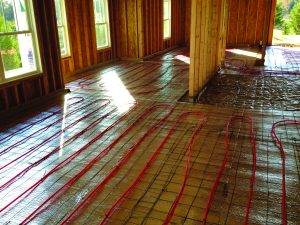 In the Fall of 1995, Rick and Alan were approached by WaterFurnace International; an alternative heating and cooling company. WaterFurnace told the partners that there was an abundant source of free, renewable energy that could be used to heat a house in the winter, cool it in the summer, and provide hot water at the tap all year round. Skeptical yet intrigued, the Tinbender boys proceeded to have themselves trained in this alternative technology, and in 1996, they installed their first geothermal heat pump system. This kind of set-up delivers an amazing four units of energy for every one kilowatt of electric energy used. That is an efficiency rating of 400%!
In the Fall of 1995, Rick and Alan were approached by WaterFurnace International; an alternative heating and cooling company. WaterFurnace told the partners that there was an abundant source of free, renewable energy that could be used to heat a house in the winter, cool it in the summer, and provide hot water at the tap all year round. Skeptical yet intrigued, the Tinbender boys proceeded to have themselves trained in this alternative technology, and in 1996, they installed their first geothermal heat pump system. This kind of set-up delivers an amazing four units of energy for every one kilowatt of electric energy used. That is an efficiency rating of 400%! Tinbenders continue to learn with ongoing training. They also constantly upgrade their services and products as the industry moves forward.
Tinbenders continue to learn with ongoing training. They also constantly upgrade their services and products as the industry moves forward.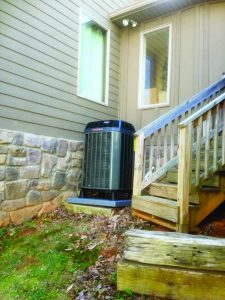 Ed tells us that the people of Floyd are so happy with Tinbenders that a lot of their business comes directly from references. They also get calls when folks see the Tinbenders vans driving up and down the roads of Floyd on other appointments. All in all, Tinbenders has a great reputation in Floyd County, and all the guys at Tinbenders appreciate the support the County has provided them.
Ed tells us that the people of Floyd are so happy with Tinbenders that a lot of their business comes directly from references. They also get calls when folks see the Tinbenders vans driving up and down the roads of Floyd on other appointments. All in all, Tinbenders has a great reputation in Floyd County, and all the guys at Tinbenders appreciate the support the County has provided them. Tinbenders, Inc. offers free estimates, maintenance contracts, system replacements, new installations, and 24-hour repair service. They also install geothermal systems, on demand water heaters, boilers, and radiant floor heating systems.
Tinbenders, Inc. offers free estimates, maintenance contracts, system replacements, new installations, and 24-hour repair service. They also install geothermal systems, on demand water heaters, boilers, and radiant floor heating systems.
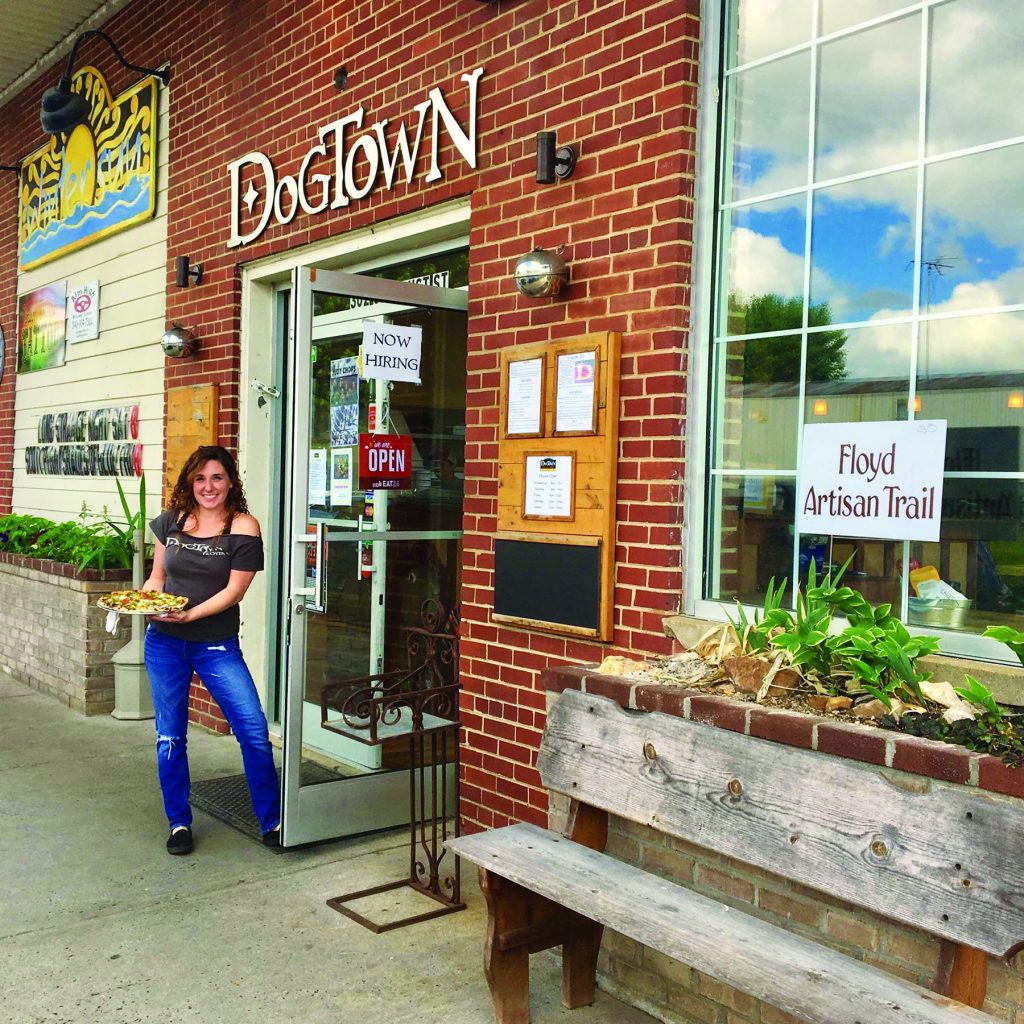
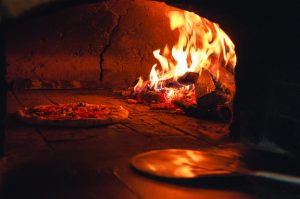 A crew set off across the east coast in an old farm truck with a brick oven built on its bed, baking beautiful pies everywhere they went; building the reputation of Dogtown Pizza. In the summer of 2010, however, after having travelled like this for a few years, a great permanent location presented itself. Dogtown settled in Floyd, Virginia.
A crew set off across the east coast in an old farm truck with a brick oven built on its bed, baking beautiful pies everywhere they went; building the reputation of Dogtown Pizza. In the summer of 2010, however, after having travelled like this for a few years, a great permanent location presented itself. Dogtown settled in Floyd, Virginia.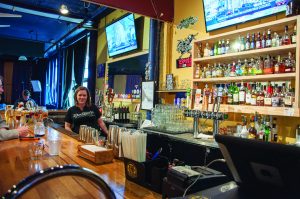 Over the years, Dogtown Roadhouse has grown an amazing reputation due to its delicious, wood-fired pizza, as well as its sixteen local, regional, and national craft beers on tap! Their good name is also due to their extensive menu and full bar service.
Over the years, Dogtown Roadhouse has grown an amazing reputation due to its delicious, wood-fired pizza, as well as its sixteen local, regional, and national craft beers on tap! Their good name is also due to their extensive menu and full bar service.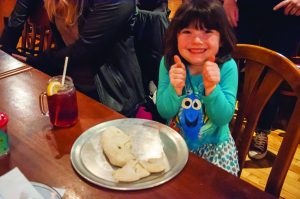 In essence, Dogtown has become its own culture; filled with many different characters all coming together to create a community-based experience for all. Dogtown Roadhouse strives to provide a family-friendly environment that serves delicious pizza creations, as well as a variety of beverages. All this in one lively spot where people can enjoy the kind of great company and comradery that continues to build and foster lasting relationships.
In essence, Dogtown has become its own culture; filled with many different characters all coming together to create a community-based experience for all. Dogtown Roadhouse strives to provide a family-friendly environment that serves delicious pizza creations, as well as a variety of beverages. All this in one lively spot where people can enjoy the kind of great company and comradery that continues to build and foster lasting relationships. For more information about Dogtown Roadhouse and Sun Music Hall, to peruse the menu, to see a calendar of events, or to book catering, visit online at www.dogtownroadhouse.com. You can also follow Dogtown Roadhouse on Facebook to keep up to date on acts hitting the stage!
For more information about Dogtown Roadhouse and Sun Music Hall, to peruse the menu, to see a calendar of events, or to book catering, visit online at www.dogtownroadhouse.com. You can also follow Dogtown Roadhouse on Facebook to keep up to date on acts hitting the stage!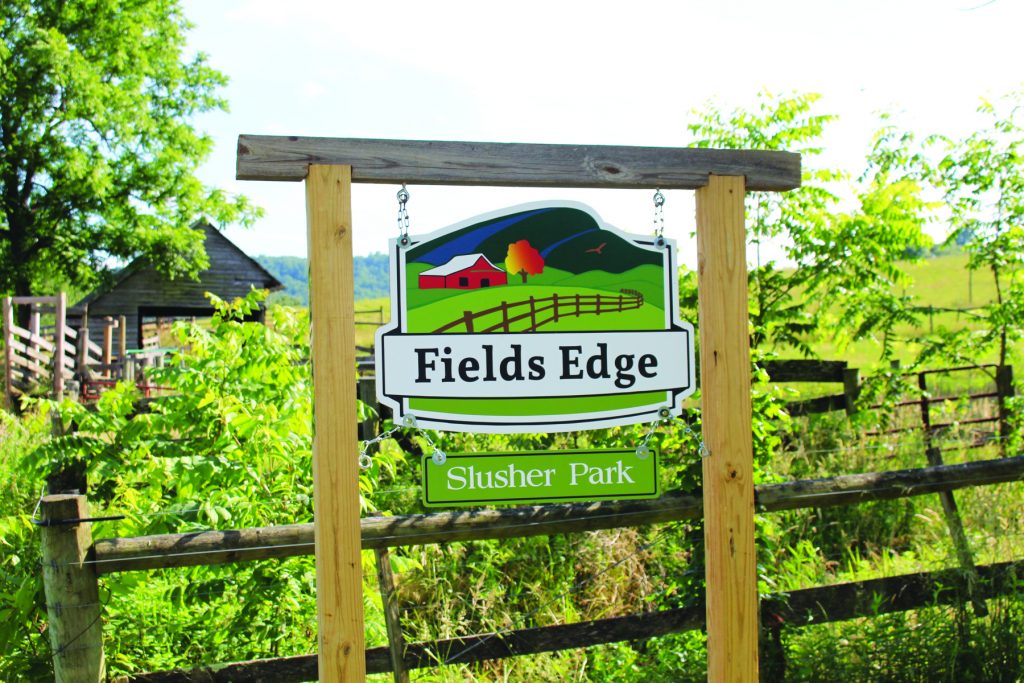
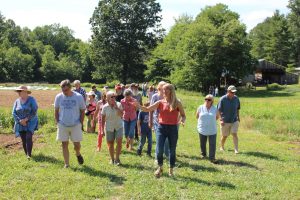 “We’ve farmed this valley for generations, and it always comes back to stewardship,” says Roger Slusher. “It’s the focus of our work. The direction we are always working towards is how we can make this operation sustainable for the long run in order to hand it over to the next generation in better shape than how we received it. Practices like cover cropping, minimum tillage, and rotational grazing go a long way.”
“We’ve farmed this valley for generations, and it always comes back to stewardship,” says Roger Slusher. “It’s the focus of our work. The direction we are always working towards is how we can make this operation sustainable for the long run in order to hand it over to the next generation in better shape than how we received it. Practices like cover cropping, minimum tillage, and rotational grazing go a long way.”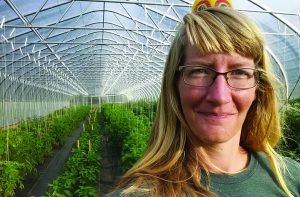 Two years ago, with an eagerness to provide for that community, Roger and Leslie Slusher approached their local Farm Credit loan officer with a vision of raising better food. Today, they are doing just that, having gathered an abundance of local support along the way.
Two years ago, with an eagerness to provide for that community, Roger and Leslie Slusher approached their local Farm Credit loan officer with a vision of raising better food. Today, they are doing just that, having gathered an abundance of local support along the way. In addition to delicious foods, Fields Edge Farm offers agritourism experiences for the everyone to enjoy. “We’re creating opportunities to get people out to the farm to learn about the things we grow,” says Kat. “To appreciate the scenery and connect with farmers in a new way.”
In addition to delicious foods, Fields Edge Farm offers agritourism experiences for the everyone to enjoy. “We’re creating opportunities to get people out to the farm to learn about the things we grow,” says Kat. “To appreciate the scenery and connect with farmers in a new way.” For information about upcoming events at the Farm, as well as locations where you can purchase Fields Edge Farm products, visit online at www.fieldsedgefloyd.com or follow Fields Edge Farm on social media.
For information about upcoming events at the Farm, as well as locations where you can purchase Fields Edge Farm products, visit online at www.fieldsedgefloyd.com or follow Fields Edge Farm on social media.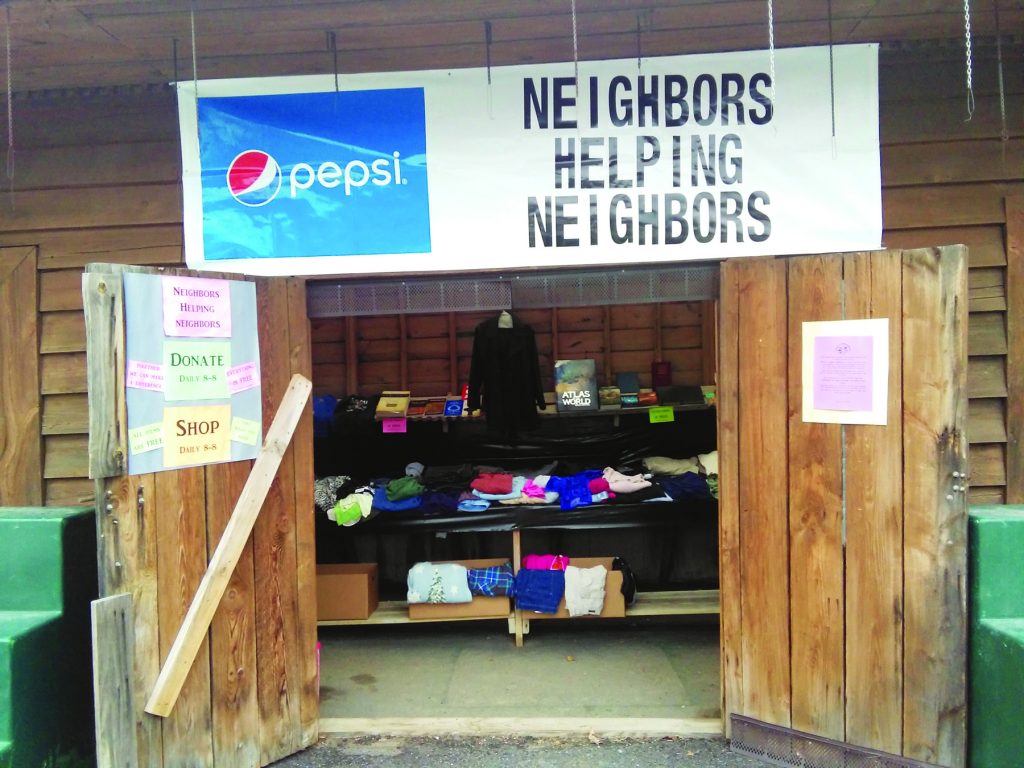
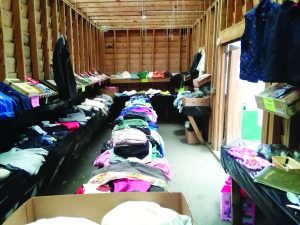 The greenhouse at Willis Village Mart is typically full of flowers and vegetable plants for your garden needs during the spring, summer and fall months. Instead of lying dormant and empty during the cold winter months, however, the greenhouse was transformed last year into a donation area and place of giving! Individuals and families in need were able to shop for much-needed items for free. That’s right! All donated items were passed along to families in need for free. Neighbors Helping Neighbors was a go!
The greenhouse at Willis Village Mart is typically full of flowers and vegetable plants for your garden needs during the spring, summer and fall months. Instead of lying dormant and empty during the cold winter months, however, the greenhouse was transformed last year into a donation area and place of giving! Individuals and families in need were able to shop for much-needed items for free. That’s right! All donated items were passed along to families in need for free. Neighbors Helping Neighbors was a go! The winters in Floyd County can be brutal, and heating costs can be expensive. There’s a phrase around Willis/Buffalo Mountain/Indian Valley in the wintertime – ‘Never mind the forecast, we make our own weather here’. Thus, gently used clothes, shoes, coats, blankets, household items, toys, etcetera are greatly appreciated, and much needed by families who otherwise may not be able to afford these things. These donations will allow families some relief from choosing between paying the electric bill and having coats and warm clothing for the winter. All items will be collected at Willis Village Mart and then organized in the greenhouse for easier shopping.
The winters in Floyd County can be brutal, and heating costs can be expensive. There’s a phrase around Willis/Buffalo Mountain/Indian Valley in the wintertime – ‘Never mind the forecast, we make our own weather here’. Thus, gently used clothes, shoes, coats, blankets, household items, toys, etcetera are greatly appreciated, and much needed by families who otherwise may not be able to afford these things. These donations will allow families some relief from choosing between paying the electric bill and having coats and warm clothing for the winter. All items will be collected at Willis Village Mart and then organized in the greenhouse for easier shopping.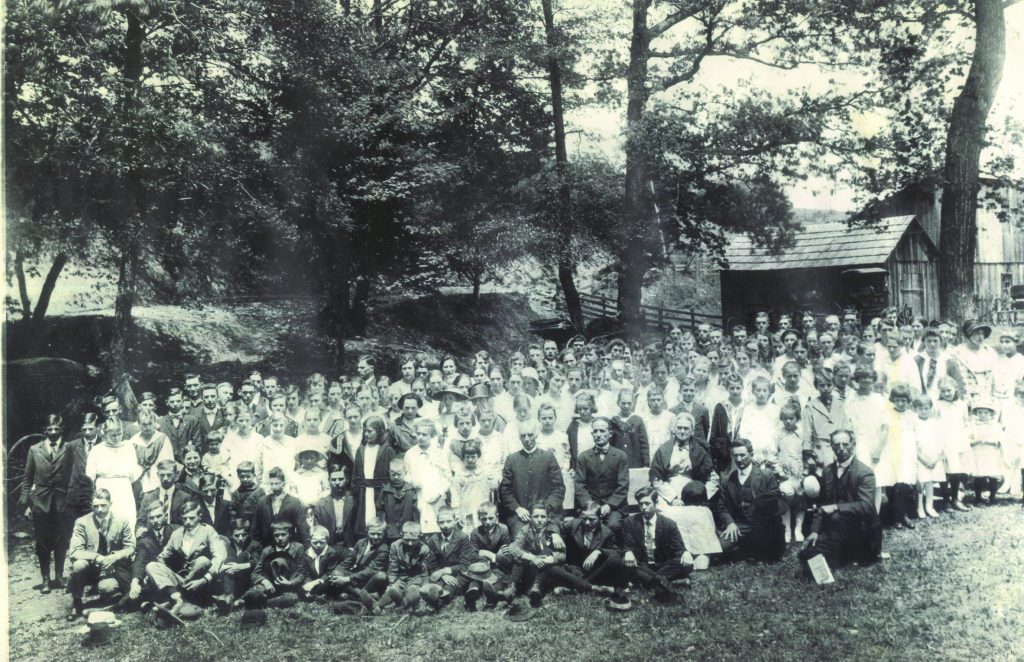
 Eventually, hymnals began to appear using the seven-note system: do, re, mi, fa, so, la, ti. Each hymn began with singing the notes of the entire song prior to beginning the hymn, leading some to affectionately dub these groups ‘the fasola-folk’. Singers were arranged in a square, with the leader standing in the center: altos facing tenors and trebles facing basses. Different parts were often entered at intervals, forging the tune in a manner similar to a round.
Eventually, hymnals began to appear using the seven-note system: do, re, mi, fa, so, la, ti. Each hymn began with singing the notes of the entire song prior to beginning the hymn, leading some to affectionately dub these groups ‘the fasola-folk’. Singers were arranged in a square, with the leader standing in the center: altos facing tenors and trebles facing basses. Different parts were often entered at intervals, forging the tune in a manner similar to a round.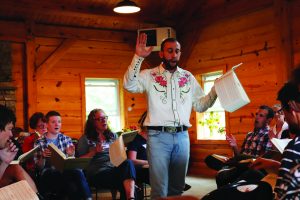 The Floyd County Historical Society is paying homage to this traditional music as part of this year’s “Tribute to the Churches of Floyd County”. The current exhibit features Shape-Note hymnals from nearly every denomination in the county. The Floyd County Historical Society will host a public event on Saturday, November 9, 2019 featuring the history of shape-note singing, as well as the Floyd Shape-Note Singers at the Floyd Center for the Arts. The event will begin at 10:00 am with a brief Historical Society meeting followed by guest presenters and shape-note singers. This event is open to the public and the Historical Society invites everyone interested in this traditional music to attend.
The Floyd County Historical Society is paying homage to this traditional music as part of this year’s “Tribute to the Churches of Floyd County”. The current exhibit features Shape-Note hymnals from nearly every denomination in the county. The Floyd County Historical Society will host a public event on Saturday, November 9, 2019 featuring the history of shape-note singing, as well as the Floyd Shape-Note Singers at the Floyd Center for the Arts. The event will begin at 10:00 am with a brief Historical Society meeting followed by guest presenters and shape-note singers. This event is open to the public and the Historical Society invites everyone interested in this traditional music to attend.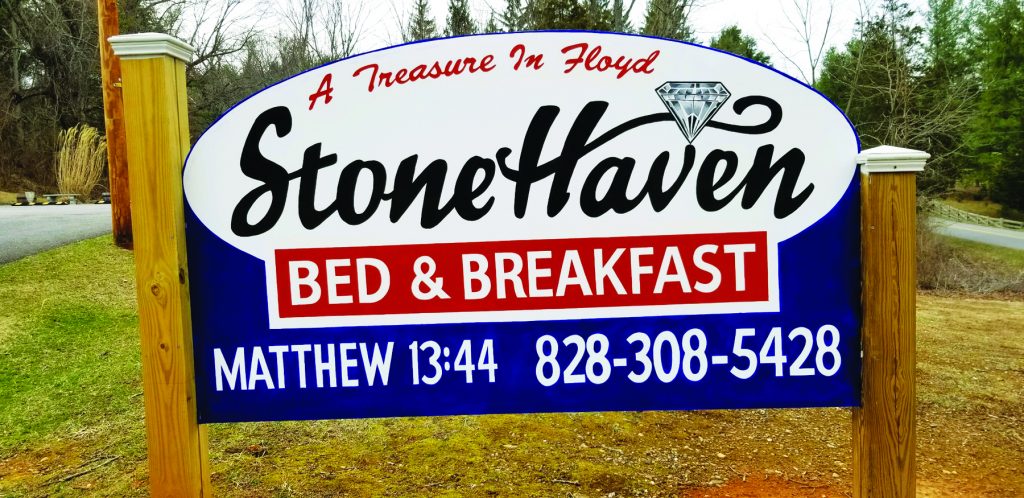
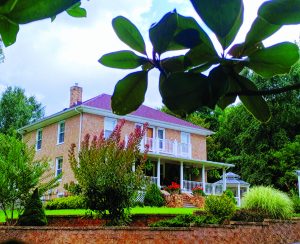 Built in 1927, the construction of StoneHaven Bed & Breakfast features soapstone that was quarried in Floyd, as well as rich, original woodwork throughout. This Georgian style home is located at 244 Christiansburg Pike NE in Floyd; just one mile from the stoplight downtown.
Built in 1927, the construction of StoneHaven Bed & Breakfast features soapstone that was quarried in Floyd, as well as rich, original woodwork throughout. This Georgian style home is located at 244 Christiansburg Pike NE in Floyd; just one mile from the stoplight downtown.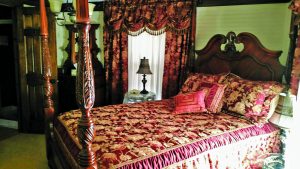 This B&B offers four, handsomely decorated bedrooms; each with a unique theme and special name. In addition to the comfort of private bathrooms and central air, StoneHaven offers wi-fi, flat-screen televisions, a library, an expansive porch, and a gazebo, as well as homemade breakfasts made with organic and locally sourced ingredients. This B&B is also just minutes away from the stoplight in downtown Floyd, where visitors can enjoy local, world-class music, fine arts and crafts, shopping, dining, recreation, and adventure!
This B&B offers four, handsomely decorated bedrooms; each with a unique theme and special name. In addition to the comfort of private bathrooms and central air, StoneHaven offers wi-fi, flat-screen televisions, a library, an expansive porch, and a gazebo, as well as homemade breakfasts made with organic and locally sourced ingredients. This B&B is also just minutes away from the stoplight in downtown Floyd, where visitors can enjoy local, world-class music, fine arts and crafts, shopping, dining, recreation, and adventure!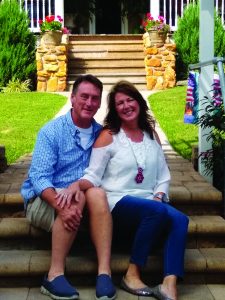 Owners Chris and Jennifer Miller feel that buying StoneHaven Bed & Breakfast was their destiny, and according to Jennifer, it was a story that was years in the making.
Owners Chris and Jennifer Miller feel that buying StoneHaven Bed & Breakfast was their destiny, and according to Jennifer, it was a story that was years in the making. Years later, Jennifer’s early adult life revolved around raising her own family; a task for which she kept in constant touch with her favorite teacher. “I spent hours on the phone with Mama,” she says. “She literally taught me to cook over that old rotary telephone with its ten-foot cord.”
Years later, Jennifer’s early adult life revolved around raising her own family; a task for which she kept in constant touch with her favorite teacher. “I spent hours on the phone with Mama,” she says. “She literally taught me to cook over that old rotary telephone with its ten-foot cord.”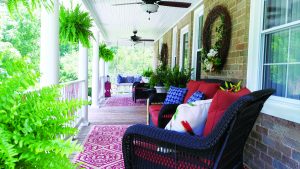 The defining moment of their experience in Maine, however, came when they’d stopped at a well-known restaurant in Camden; famous for their lobster rolls. Unaware of the time, Jennifer and Chris had arrived when the place was closing to prepare for the dinner crowd. As they turned to walk away, they were quickly greeted by the owner who escorted them back in and insisted on serving them personally. Afterward, he walked them back out and asked if they had any plans for their future together.
The defining moment of their experience in Maine, however, came when they’d stopped at a well-known restaurant in Camden; famous for their lobster rolls. Unaware of the time, Jennifer and Chris had arrived when the place was closing to prepare for the dinner crowd. As they turned to walk away, they were quickly greeted by the owner who escorted them back in and insisted on serving them personally. Afterward, he walked them back out and asked if they had any plans for their future together.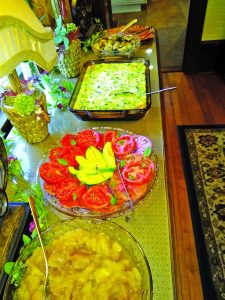 That was fifteen years ago. In May of 2018, however, the whisper of destiny that had been following Jennifer since childhood finally became a triumphant song. She and Chris purchased the old soapstone home on Christiansburg Pike and opened StoneHaven Bed & Breakfast two months later.
That was fifteen years ago. In May of 2018, however, the whisper of destiny that had been following Jennifer since childhood finally became a triumphant song. She and Chris purchased the old soapstone home on Christiansburg Pike and opened StoneHaven Bed & Breakfast two months later.
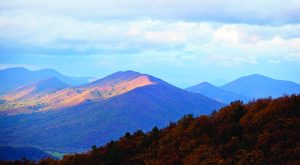 Twenty years or so later, while living in Floyd County with my wife, Joanne, we were making our living at Art and Craft shows. While exhibiting at these shows, I would often see other people selling their photography. Then one day, it occurred to me that I could do it, too! I had loved the Ridge and Valley country of Virginia since I lived in Lexington as a boy. And now that I was living in the Blue Ridge, surrounded by amazing natural beauty, it seemed a dream within reach that I could make and sell landscape photographs.
Twenty years or so later, while living in Floyd County with my wife, Joanne, we were making our living at Art and Craft shows. While exhibiting at these shows, I would often see other people selling their photography. Then one day, it occurred to me that I could do it, too! I had loved the Ridge and Valley country of Virginia since I lived in Lexington as a boy. And now that I was living in the Blue Ridge, surrounded by amazing natural beauty, it seemed a dream within reach that I could make and sell landscape photographs.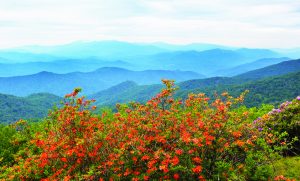 I traveled the Blue Ridge regions of Virginia and North Carolina with my large format, 4X5 camera; taking photographs of the natural beauty to be found there. I enjoyed using this big, bulky, awkward, and slow camera because it imposed discipline on the art of seeing. When I went out for a day of shooting, I would just take around twenty sheets of film. This limited number of shots for a long day of picture-making required a deliberate and thoughtful approach. Of course, I also wanted to have some film left for the often-magical evening light.
I traveled the Blue Ridge regions of Virginia and North Carolina with my large format, 4X5 camera; taking photographs of the natural beauty to be found there. I enjoyed using this big, bulky, awkward, and slow camera because it imposed discipline on the art of seeing. When I went out for a day of shooting, I would just take around twenty sheets of film. This limited number of shots for a long day of picture-making required a deliberate and thoughtful approach. Of course, I also wanted to have some film left for the often-magical evening light. After working in my darkroom for eighteen years, I began to make the transition; first to wide format digital printing on canvas, and then to using a professional digital camera. This was a challenge. I was not a computer guy. But I did learn, and I’ve become a big fan of the process, as well as the beautiful prints I can make. The tools I use now allow even greater control and artistry than I had in the darkroom. I still love printing, and I still get great satisfaction from producing a beautiful image, even after printing over twenty thousand photographs!
After working in my darkroom for eighteen years, I began to make the transition; first to wide format digital printing on canvas, and then to using a professional digital camera. This was a challenge. I was not a computer guy. But I did learn, and I’ve become a big fan of the process, as well as the beautiful prints I can make. The tools I use now allow even greater control and artistry than I had in the darkroom. I still love printing, and I still get great satisfaction from producing a beautiful image, even after printing over twenty thousand photographs!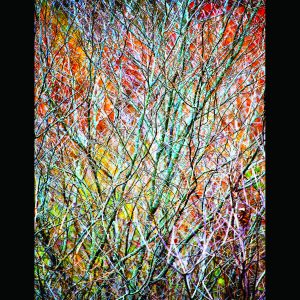 When I go out to shoot photographs, I try to attune myself to the visual world in a special way. I see the angle and color of the light, and I imagine what the scene might be like from a different point of view or at a different time of day. I move slowly along the trail, paying attention to small details. I stop and observe. I move a little to the left or right and observe some more; sometimes looking through the camera or changing the lens. This is how I slowly work my way into a scene. From a day of photography, I can hope to get one or two special images. That’s always a good day!
When I go out to shoot photographs, I try to attune myself to the visual world in a special way. I see the angle and color of the light, and I imagine what the scene might be like from a different point of view or at a different time of day. I move slowly along the trail, paying attention to small details. I stop and observe. I move a little to the left or right and observe some more; sometimes looking through the camera or changing the lens. This is how I slowly work my way into a scene. From a day of photography, I can hope to get one or two special images. That’s always a good day!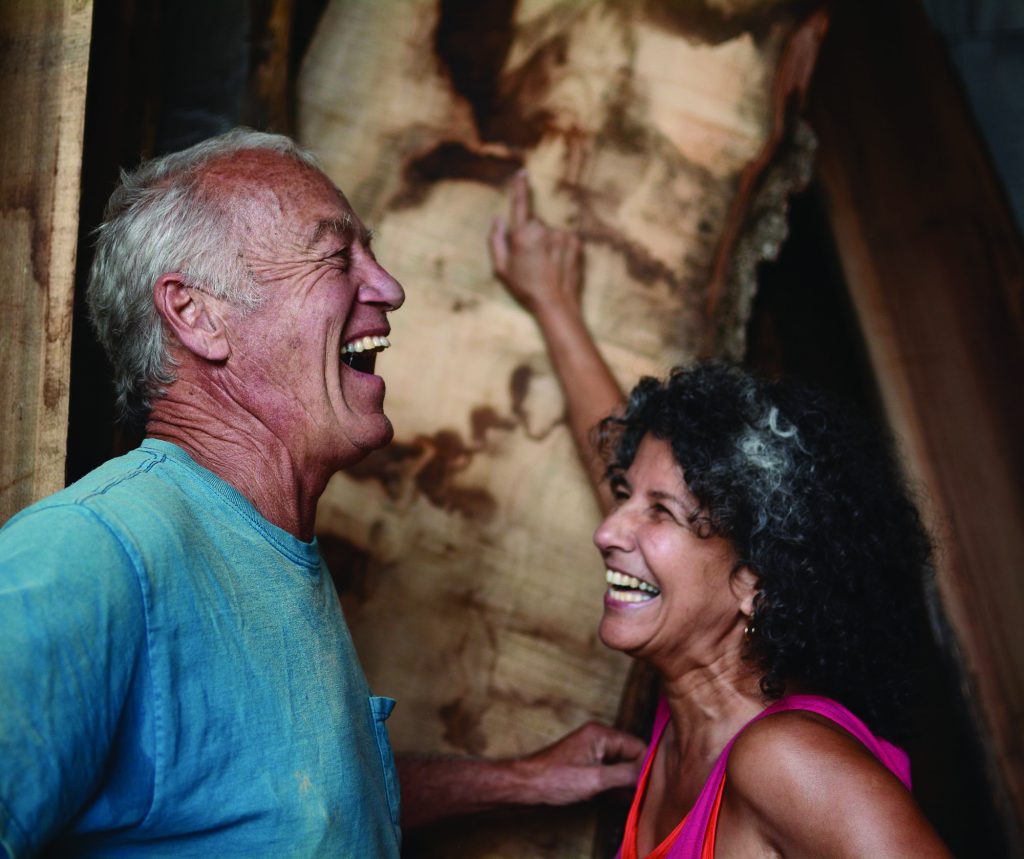
 Phoenix Hardwoods’ products exhibit a clear, practical utility, as well as an obvious connection to the original tree and a genuine beauty. Take, for example, a stool with a seat that shows the warm hue and chatoyant gleam of butternut. Or a table with a top and legs made from the same piece of curly maple; featuring an entrancing, rippling figuring, as well as a live edge. Or even a headboard in which the original shape and coloration of a thick walnut slab is captured in a Shaker-style frame. “It still looks like the tree,” Bill says.
Phoenix Hardwoods’ products exhibit a clear, practical utility, as well as an obvious connection to the original tree and a genuine beauty. Take, for example, a stool with a seat that shows the warm hue and chatoyant gleam of butternut. Or a table with a top and legs made from the same piece of curly maple; featuring an entrancing, rippling figuring, as well as a live edge. Or even a headboard in which the original shape and coloration of a thick walnut slab is captured in a Shaker-style frame. “It still looks like the tree,” Bill says. That level of dedication to making sure everything is just right can also be found on Phoenix Hardwoods’ shop floor, where, in addition to Bill and Corinne, four full-time employees build furniture by hand. To be sure, they use power tools, but the machines are hand-controlled, not computer-operated, and no detail is overlooked. For example, the stools use wedged mortise and tenon joints to connect each seat to its legs. This joinery technique involves hand rasping the opening of the mortise (in the seat) to create a wider opening, which allows for the insertion of a wedge into the end of the tenon (the top of the legs). The result is a much stronger joint.
That level of dedication to making sure everything is just right can also be found on Phoenix Hardwoods’ shop floor, where, in addition to Bill and Corinne, four full-time employees build furniture by hand. To be sure, they use power tools, but the machines are hand-controlled, not computer-operated, and no detail is overlooked. For example, the stools use wedged mortise and tenon joints to connect each seat to its legs. This joinery technique involves hand rasping the opening of the mortise (in the seat) to create a wider opening, which allows for the insertion of a wedge into the end of the tenon (the top of the legs). The result is a much stronger joint.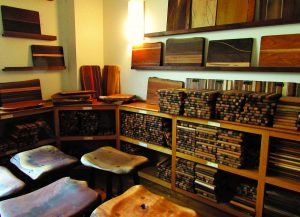 Walk into the shop one day, and you may see Henry Vangunten working on his original new design; a table with a floating top. Beside him, Eric McDaniel may be gluing and clamping stool legs, then setting them aside to dry for a day. Caleb Johnson, who has been with Phoenix for over fifteen years, will be coming up with unique ways to use the unusual scraps of highly figured lumber.
Walk into the shop one day, and you may see Henry Vangunten working on his original new design; a table with a floating top. Beside him, Eric McDaniel may be gluing and clamping stool legs, then setting them aside to dry for a day. Caleb Johnson, who has been with Phoenix for over fifteen years, will be coming up with unique ways to use the unusual scraps of highly figured lumber. The Graefes mostly use a linseed oil-citrus solvent finish; applying a minimum of three coats and burnishing between coats. The tables are mostly finished with a dull, waterproof varnish. Preparing and finishing a burl live-edge piece is incredibly time-consuming, but it’s the kind of work which brings Corinne satisfaction. “I’ve always been interested in woodworking,” she relates. “I was the first girl in my shop class.”
The Graefes mostly use a linseed oil-citrus solvent finish; applying a minimum of three coats and burnishing between coats. The tables are mostly finished with a dull, waterproof varnish. Preparing and finishing a burl live-edge piece is incredibly time-consuming, but it’s the kind of work which brings Corinne satisfaction. “I’ve always been interested in woodworking,” she relates. “I was the first girl in my shop class.”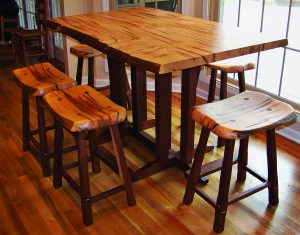 Phoenix Hardwoods is particularly known for its larger pieces. Bill loves working with five-foot wide logs. They are also famous for being featured in the rooms and lobby of Hotel Floyd. The company uses mainly hardwoods native to New River Valley forests, but they will also work with hardwoods recovered from planted species. “Arborists bring us all kinds of amazing logs,” they say.
Phoenix Hardwoods is particularly known for its larger pieces. Bill loves working with five-foot wide logs. They are also famous for being featured in the rooms and lobby of Hotel Floyd. The company uses mainly hardwoods native to New River Valley forests, but they will also work with hardwoods recovered from planted species. “Arborists bring us all kinds of amazing logs,” they say.

 Currently, the Buffalo Hemp Company are leasing to buy a seventy-five-acre farm on Franklin Pike. That land, along with an eight-thousand square foot building and outbuildings provide plenty of room for the business to grow. Their first field acre of hemp for CBD should be ready for harvest around October, and other plants have been grown onsite in greenhouses. Some of the harvested plants to be used for free-roll CBD smokes are already hanging in a drying room.
Currently, the Buffalo Hemp Company are leasing to buy a seventy-five-acre farm on Franklin Pike. That land, along with an eight-thousand square foot building and outbuildings provide plenty of room for the business to grow. Their first field acre of hemp for CBD should be ready for harvest around October, and other plants have been grown onsite in greenhouses. Some of the harvested plants to be used for free-roll CBD smokes are already hanging in a drying room.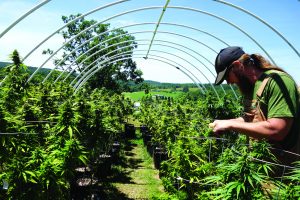 Attracted to the challenge of creative business development in a new industry, Wall said he likes the idea of CBD products being part of the “farm-to-table” movement, as well as the local economy. The first step toward the focus on the local economy, Wall tells us, will be to hire local employees to run the shop and harvest the crop.
Attracted to the challenge of creative business development in a new industry, Wall said he likes the idea of CBD products being part of the “farm-to-table” movement, as well as the local economy. The first step toward the focus on the local economy, Wall tells us, will be to hire local employees to run the shop and harvest the crop.
 What made Perry’s work so unique was that, in 1991, he was the first biologist to go up into the canopy ecosystem. No one had ever done it before, and because of it, several new species were discovered. Among them was a monkey no one had ever seen because it lives its whole life high in the trees. There were also two new snake species no one had ever seen.
What made Perry’s work so unique was that, in 1991, he was the first biologist to go up into the canopy ecosystem. No one had ever done it before, and because of it, several new species were discovered. Among them was a monkey no one had ever seen because it lives its whole life high in the trees. There were also two new snake species no one had ever seen. Robert decided to present his ideas to a couple of property owners in Costa Rica. He didn’t have to try very hard to convince them. “They thought it was such a great idea that they just went for it. They just did it!” And that’s how Robert Nickell designed the world’s first proper, recreational zipline.
Robert decided to present his ideas to a couple of property owners in Costa Rica. He didn’t have to try very hard to convince them. “They thought it was such a great idea that they just went for it. They just did it!” And that’s how Robert Nickell designed the world’s first proper, recreational zipline. The local Fox news station came out and filmed a segment that aired during the evening news. The piece was so popular that calls poured into the station! There were also hundreds of hits on their website, with comments asking for more information. As a result, Fox re-ran the story three times a day for a whole week. Signature Magazine in North Carolina also did a story, and it was the most-hit story on the magazine’s website in five years! Hundreds of people came for ziplining after having seen that article.
The local Fox news station came out and filmed a segment that aired during the evening news. The piece was so popular that calls poured into the station! There were also hundreds of hits on their website, with comments asking for more information. As a result, Fox re-ran the story three times a day for a whole week. Signature Magazine in North Carolina also did a story, and it was the most-hit story on the magazine’s website in five years! Hundreds of people came for ziplining after having seen that article. Robert and his family had moved to Branson, Missouri to build Zipline USA after having sold the first one in North Carolina. At the time, Zipline USA was the biggest in the world. It covered 120 acres of land and had twelve cables; one of which was three quarters of a mile long and 350 feet high – stretching from mountain top to mountain top. It’s still one of the biggest in the world, and still probably the biggest in United States for land area and length of the cables. “With close to five miles of cable,” says Robert, “it’s a heck of big zip line”.
Robert and his family had moved to Branson, Missouri to build Zipline USA after having sold the first one in North Carolina. At the time, Zipline USA was the biggest in the world. It covered 120 acres of land and had twelve cables; one of which was three quarters of a mile long and 350 feet high – stretching from mountain top to mountain top. It’s still one of the biggest in the world, and still probably the biggest in United States for land area and length of the cables. “With close to five miles of cable,” says Robert, “it’s a heck of big zip line”. A month later during FloydFest 2019, close to eighteen hundred people tried Robert’s temporary set-up that included two, 60-foot high lines that stretched 385 feet, each way. “It’s hard to say no to free ziplines”. With such excellent promotion, Buffalo Mountain got a solid start, and now averages two tours a day during the week and more on weekends.
A month later during FloydFest 2019, close to eighteen hundred people tried Robert’s temporary set-up that included two, 60-foot high lines that stretched 385 feet, each way. “It’s hard to say no to free ziplines”. With such excellent promotion, Buffalo Mountain got a solid start, and now averages two tours a day during the week and more on weekends. There is also the Rocky Knob Treetop Tour which can accommodate those with tighter schedules. In just forty-five minutes to an hour, this tour features the park’s first five cables, and is perfect for Boy Scouts, Girl Scouts, and birthday parties!
There is also the Rocky Knob Treetop Tour which can accommodate those with tighter schedules. In just forty-five minutes to an hour, this tour features the park’s first five cables, and is perfect for Boy Scouts, Girl Scouts, and birthday parties!